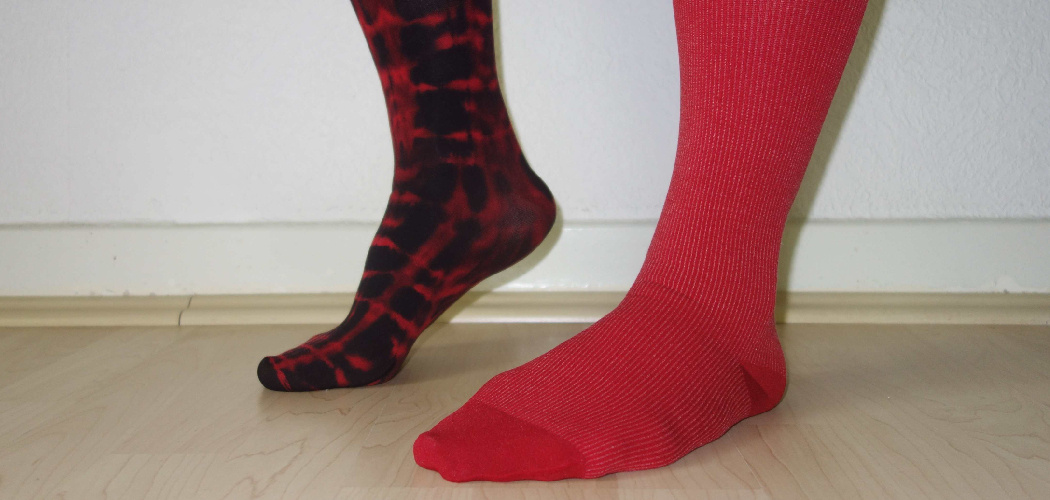Are you an athlete, a frequent traveler or spend extended time on your feet? If so, you’re probably aware of the numerous benefits that wearing compression socks can bring. These specialized socks provide extra support and help reduce pain from swelling and tired muscles in lower legs. However, they must fit correctly to provide the full range of benefits. It’s important to understand how tight is too tight when fitting compression socks which is why today we’ll be discussing how to know if compression socks are too tight.
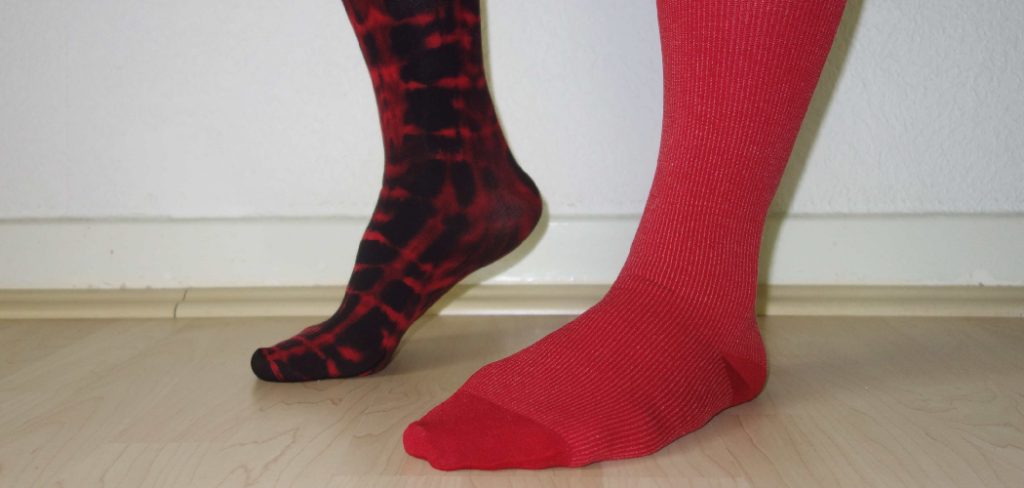
Compression socks can provide relief and help improve blood flow, but if they’re too tight they can do more harm than good. Knowing when compression socks are too tight is important for getting the most out of them without putting undue strain on your veins and arteries. In this blog post, we’ll discuss how to identify when compression socks fit correctly through symptoms such as pain or discomfort, skin color changes, tingling sensations and other signs that tell you it’s time to adjust their fit. Read on for an insightful guide to properly fitting a pair of supportive compression socks!
What Will Happen if Compression Socks Are Too Tight?
1. Discomfort
One of the main reasons to wear compression socks is for comfort. If the socks are too tight, instead of feeling comfortable, it could feel like an uncomfortable pressure around the foot and calf area. This can be a potential issue when you’re wearing your compression socks for long periods of time.
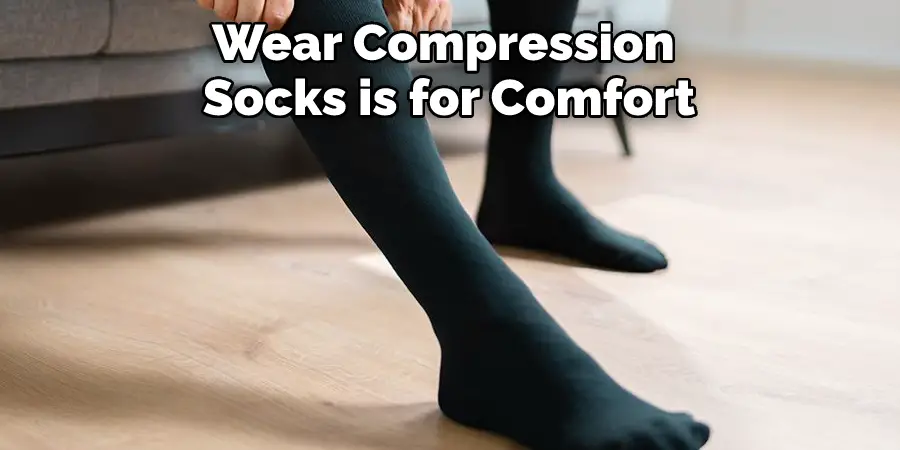
2. Poor Circulation
Compression socks are designed to help reduce swelling and improve circulation. However, if they are too tight, it can have the opposite effect. This can lead to poor circulation and a risk of blood clots or other circulatory issues.
3. Restrictive Movement
If the compression socks are so tight that they restrict movement, then it’s best to find another pair with a more comfortable fit. Restrictive movement can lead to issues such as pain and discomfort in the legs when walking or standing.
It’s important to make sure that compression socks are not too tight so that you can enjoy all of the benefits they have to offer. Make sure that you buy the right size for your feet and if you have any questions, consult a doctor to ensure you get the most out of your compression socks.
10 Tips On How to Know if Compression Socks Are too Tight
1. Check for Tightness Around the Top of the Socks
If you feel any discomfort or pressure around the top of your compression socks, they may be too tight and need to be adjusted. Also, this will prevent any circulation issues or numbness in your feet.
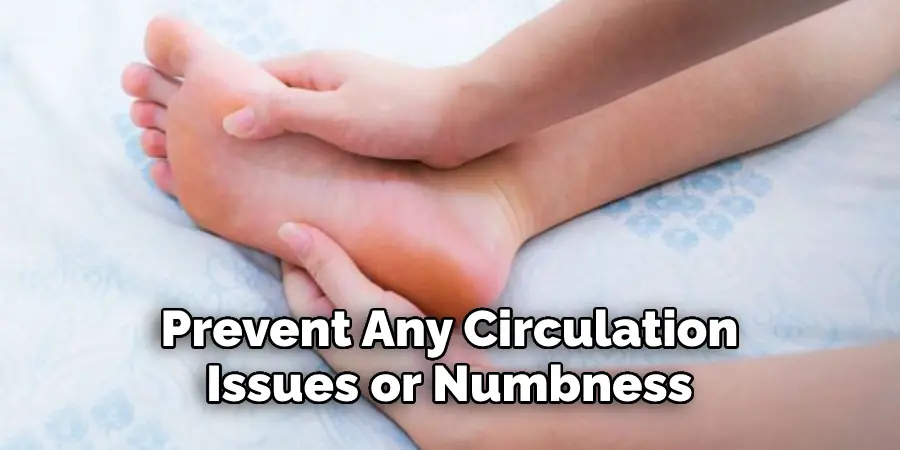
2. Make sure the Socks Fit Comfortably Around the Calf
Compression socks are designed to fit snugly around the calf, but they should not be uncomfortably tight. If you can’t move your leg freely with compression socks on, then they are likely too tight.
3. Check for Any Discomfort or Pain in the Feet, Ankles and Legs
If your feet, ankles or legs are experiencing any discomfort or pain when wearing compression socks then they are likely too tight. Compression socks should be comfortable and provide a feeling of support rather than pressure and pain.
4. Look for Any Redness, Swelling or Irritation
If you notice any redness, swelling, or irritation on your skin after wearing compression socks then they may be too tight. Compression can increase circulation and reduce swelling, so if the opposite is happening it could be a sign that the socks are too tight.
5. Make Sure Your Socks Don’t Restrict Your Movement
Compression socks should not restrict your movement in any way. If you feel like they are limiting your range of motion then they may be too tight and need to be adjusted or replaced.
6. Listen to Your Body for Signs of Discomfort
If you experience any kind of discomfort when wearing compression socks, they may be too tight. The pressure should not be painful and you should be able to move normally with the socks on.
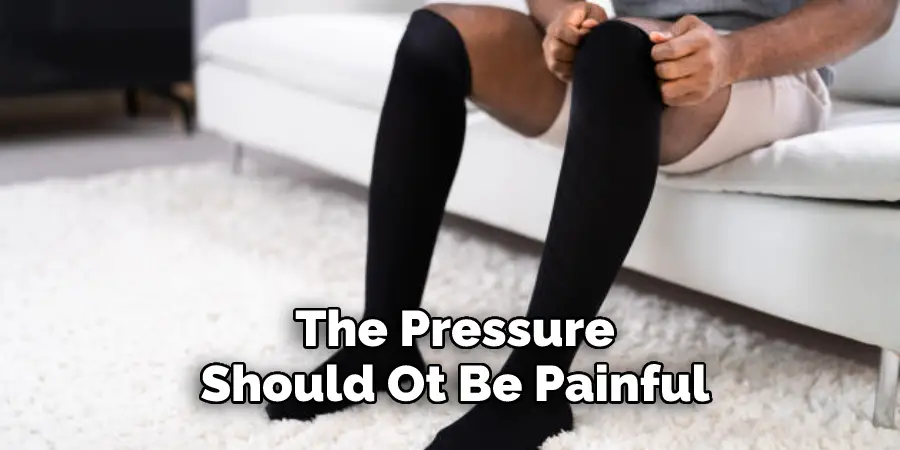
7. Avoid Wearing Compression Socks for Too Long
If you wear compression socks for extended periods of time, your feet and legs may become sore or fatigued. This could be a sign that your socks are too tight and you should remove them for a few hours to let your body rest.
8. Pay Attention to Any Tingling or Numbness Sensations
If you experience any tingling or numbness sensations when wearing compression socks, they may be too tight. This could restrict blood flow in the feet and lead to other health issues.
9. Don’t Ignore Any Discomfort or Pain
If you feel any kind of discomfort or pain while wearing compression socks, they may be too tight and need to be adjusted or replaced. Ignoring the issue could lead to more serious health problems in the future.
10. Make Sure You’re Using the Right Size for You
Choose the right size for your compression socks and make sure they fit comfortably. If you are unsure about the sizing, consult a medical professional or read the manufacturer’s instructions before buying.
These tips should help you determine if your compression socks are too tight and need to be adjusted or replaced. Make sure to take care of your body and listen to its signals when wearing compression socks. If you experience any discomfort or pain, adjust the socks accordingly or seek medical attention if needed. Compression socks can provide many benefits and should be worn in a comfortable way for the best results.

Frequently Asked Questions
What Precautions Should I Take When Wearing Compression Socks?
When wearing compression socks, it is important to ensure that they are not too tight or too loose. It is also important to pay close attention to your feet while wearing them. If you experience any discomfort or pain while wearing the socks, you should remove them immediately and consult with a medical professional.
How Can I Tell if My Compression Socks Are Too Tight?
The most common symptom of too-tight compression socks is pain or discomfort while wearing them. Other signs that they may be too tight include swelling, tingling, numbness, or discoloration in the skin around your legs. If you experience any of these symptoms, you should immediately remove the socks and consult with a medical professional.
What Should I Do If My Compression Socks Are Too Tight?
If your compression socks are too tight, you should stop wearing them right away and consult with a medical professional. In some cases, it may be necessary to adjust the size of the socks or switch to a different type of compression sock. Your doctor or physical therapist can best advise you on the right course of action for your particular situation. It is also important to make sure that you are not wearing the socks for too long at a time, as this could lead to more serious issues such as deep vein thrombosis or nerve damage. Taking regular breaks throughout the day can help ensure that your compression socks are not causing any harm.
How Many Compressions Should My Socks Provide?
The amount of compression provided by your socks should depend on your individual needs and situation. Generally speaking, higher levels of compression are recommended for people with medical conditions such as chronic venous insufficiency or edema. Lower levels of compression may be suitable for those who have sore feet or need some extra support while exercising. You should always consult with your doctor or physical therapist about the best type and level of compression for you.
Additionally, it is important to make sure that the compression levels do not exceed the maximum recommended amount for your particular situation. Taking these precautions will help ensure that your compression socks are providing adequate support without being too tight. Also make sure to check your socks for any signs of wear and tear, as this could indicate that it is time to replace them. Finally, be sure to always follow the instructions provided by the manufacturer when wearing compression socks. Doing so will help ensure that you get the most out of your purchase and stay safe while doing so.
Conclusion
Overall, it’s important to keep in mind that when it comes to compression socks, there is no one-size-fits-all approach. Each person needs to find the fit and pressure level that works best for them, as it may vary depending on the condition or purpose of wearing them.
Now you know how to know if compression socks are to tight! Additionally, if you experience discomfort when wearing your compression socks, it’s important to stop usage immediately and speak with a medical professional about what might work best for you. Remember: compression socks are only helpful if they are worn right! Taking the necessary time to adjust them properly will ensure your comfort and help you reap the full benefits of these versatile pieces of apparel.

